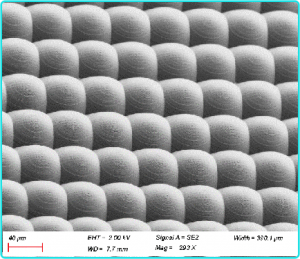
Micro and Nano Processing | Introduction to MEMS Processing (I)
Microsystem, Micro Electro Mechanical System (MEMS) and Micromachine are three different terms that refer to the use of modern micro-nano processing technology to integrate micro-sensors, micro-actuators, micro-electronics, micro-energy, control circuits and other micro-functional units on a chip. Micromachine is a complete intelligent micro system with optical, electronic, mechanical, data acquisition and analysis functions by integrating micro functional units such as micro sensors, micro actuators, micro electronics, micro energy, control circuits, etc. on a chip.
With the innovation and development in the fields of medicine, biology, defense, environmental protection, communication, aviation, and space, people are pursuing smaller and smaller scale and more and more functional system devices. In the past few years, we have been able to foresee the development of manufacturing technology along the path from macroscopic to microscopic scale, which will lead to the creation of various mass reproduction processing tools in the microscopic scale.
Since the invention of transistors by Badin-Benlet and others in 1948, research on microfabrication of semiconductor materials has begun, with the aim of integrating more functional units of electronics in the smallest possible area. The rapid development of microelectronics technology has led to the shrinking scale of integrated circuit chips and has inspired people to continue exploring new breakthroughs in manufacturing technology in the field of microscale production, when it was realized that millions of dexterous and tiny parts could be made simultaneously using the batch manufacturing technology of semiconductor chips.
This has led to a new revolution in the field of micro-mechanical manufacturing after the production of micron-scale prototypes of many macro-mechanical systems.
The first silicon miniature pressure sensor was introduced in 1962, followed by microstructures such as gears, gear pumps, and pneumatic turbines in the size range of 50um-500um, and silicon micro electrostatic motors with rotor diameters of 60-120um were developed in 1987, demonstrating the potential of using silicon micromachining processes to create tiny movable structures and micro systems compatible with integrated circuits, which also led to the emergence of micro electro-mechanical systems (MEMS). The 1987 IEEE Micro Robots and Teleoperators conference in the United States, with the theme "Small Machines, Big Opportunities - A Report on the Emerging Field of Microdynamics," marked the beginning of a worldwide research boom. The theme of the IEEE Micro Robots and Teleoperators Conference in 1987 was "Small Machines, Big Opportunities - A Report on the Emerging Field of Microdynamics", marking the beginning of a worldwide research movement.
Microelectromechanical system is not only the miniaturization of macro-mechanics, but also the simple superposition of microstructures, but the interconnection of different functional units through a large number of interfaces to achieve a variety of functional systems. The physical and chemical signals such as light, electricity, temperature, force, sound, etc. in the external environment are detected by sensors and converted into electrical signals, and after information acquisition, conversion and processing, the signals are transmitted to the controller and amplified by amplifiers to control the interaction between the actuator and the external world. Compared with traditional integrated circuits that involve only a single electrical function, microelectromechanical systems can sense external physical and chemical signals such as light, electricity, temperature, force, sound, etc. through sensors and control the actuators to interact with the external world.
Microelectromechanical systems technology is a multidisciplinary emerging discipline involving precision micromechanics, microelectronics, materials science, microfabrication, systems and control technology and other disciplines and physics, chemistry, mechanics, biology and other basic disciplines. The goal of microelectromechanical systems is, on the one hand, to enable the production of millions of micro-component parts through miniaturization and integration, and greatly reduce the cost, and has the advantages of energy saving, material saving, small inertia, easy control, high speed, high information density, high functional density, high interconnection density, etc., and can achieve a variety of functions in a very small space, on the other hand, also lies in the preparation of various types of micro-systems with different new functions For example, a micro tweezer that can pick up a red blood cell, a butterfly that can fly in a magnetic field, and a micro robot that can enter the human blood vessels for diagnosis and treatment through multi-variable coordination control.
Microelectromechanical systems technology is a tiny and complex system, to achieve this system in addition to theoretical basic research, but also need to develop a variety of basic technologies, which include, (1) the design of microelectromechanical systems technology, including the selection of materials, such as construction materials and functional materials (2) microfabrication technology, such as processing high depth to width ratio, multi-layer or three-dimensional microstructure processing (3) micro-sensor light, electricity, temperature, force,,, sound A micro-actuator micro-pump, micro-valve, micro-switch, etc. (5) micro-electromechanical system assembly and bonding technology and other key technologies. The basic research of microsystem technology covers the main problems faced by nanotechnology, with the reduction of the size of the research object, it is necessary to explore and cognize the micro-dynamics, micro-hydrodynamics, micro-thermodynamics, micro-friction, micro-optics, micro-structure and surface physical effects and chemical processes at the micrometer-nanometer scale in depth.
Among the basic technologies of MEMS, microfabrication technology is the basis for the realization of MEMS, and it is also the core technology and research hotspot of MEMS.
We offer fastMEMS device / micro and nanostructure processing design services, Feel free to leave a message to inquire.
Related Products
Related Reading
Micro and Nano Processing | Introduction to Dry Etching
Micro and Nano Processing | Dry Etching Process Introduction Etching technology is divided into: wet process
Micro and Nano Processing | MEMS Fine Processing (IV)
Micro and Nano Processing | MEMS Fine Processing (IV) 1.3 Photolithography
Micro and Nano Processing | Introduction to Diffractive Optics
Micro and Nano Processing | Introduction to Diffractive Optics Diffractive Optics (Di)


